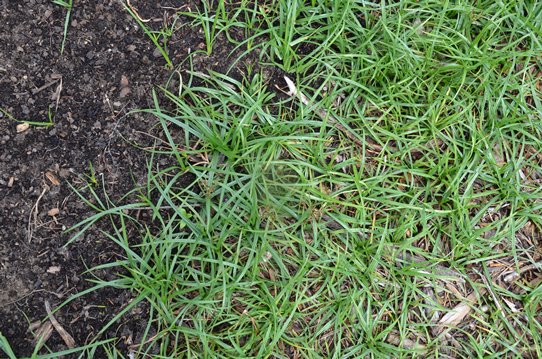The spring season in panhandle Florida is colorful. Every location from frequently manicured gardens to untended fields and pastures are exploding with hues and tones pleasing to the eye.
These heralds of the warmer weather to come are trailed by the warm season’s greenery which fills in the gaps between blooms. The consistent and ample rains have assured the continuance of a bright and pleasing landscape backed by countless shades and textures of green.
The adequate moisture has also assured the aggressive growth of an individually small, but collectively gigantic, weed which plagues every member of humanity associated with attempting to cultivate plants.
Purple nut sedge, Cyprus rotundus, has emerged en mass from every possible sunny location with soil. This native plant is a rapidly spreading perennial which will take every opportunity to colonize new locations.
The identifier purple is in the name because there is a purple-tinged section of this sedge where it emerges from the ground. The plant is sometimes referred to as purple nut grass because of its long narrow leaves and its erect growth pattern originate from a nutlike basal bulb.
There are other sedges in north Florida, but only yellow nut sedge is identified by a specific color. It is sometimes called chufa and is a popular feed for wild turkeys and turkey hunters.
The dark green, smooth leaves blend in easily with many turf grasses. Beneath the soil’s surface and out of sight, the root system grows in every direction.
Purple nut sedge’s roots are a series of spreading rhizomes and tubers or bulbs identified as nutlets. Each nutlet sprouts a new bunch of grass-like leaves and continues growing the rhizomes.
The densely population of this sedge quickly crowds out most other plants, but most especially turf and forage grasses. It can reach a height of 18 inches on its triangle shaped stem.
The root system’s design assures this plants survival and continued success. If pulled, the rhizomes break off leaving a large number of nutlets to develop and emerge at a later date.
If plowed or tilled, the nutlets are detached and spread to new and inviting locations. Many times nutlets lodge in tillage equipment only to shake loose and deposited in un-colonized locations.
Most herbicides have little on this sedge’s hardy root system. Selected pre-emergent herbicides will prevent many of the nutlets from germinating in spring.
North Florida’s sandier soils provide an ideal growing environment for purple nut sedge. The occasional periods of water saturation from storms do not deter this plant’s rapid and growth expansion to new areas, but it will not tolerate heavy shade.
Purple nut sedge’s extreme competitive nature is a heavy consumer of plant nutrients and robs rivals of important compounds necessary for their survival. Additionally, it produces an allelopathic substance which is toxic to some plants.
Purple nut sedge is found in many locales in North America where the environment is hospitable to its growth. The lush green leaves and touch of purple signify work for anyone who is maintaining a lawn or garden.
To learn more about purple nut sedge in north Florida contact your local UF/IFAS County Extension Office and read this informative publication on purple nutsedge.
- Get Your Trees Ready For The Winds of October - October 8, 2019
- Feeding Caterpillars Aren’t Always Cute - August 10, 2018
- Wild Azaleas - May 23, 2018

